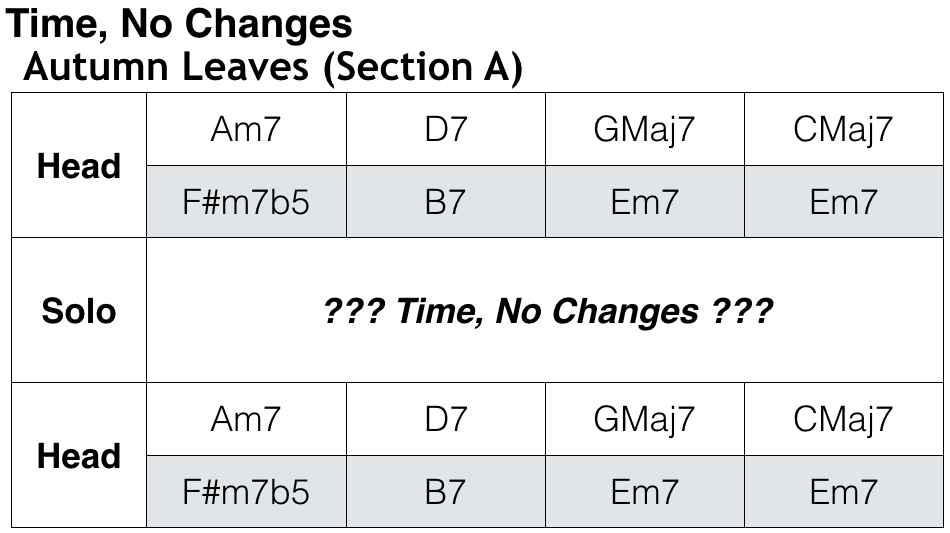Head-Solo-Head
Traditional Jazz songs follow a ‘Head-Solo-Head’ structure. Where the:
- Head = melody with underlying chord progression;
- Solo = improvising over that same chord progression.
By the 1960’s, this formula had gotten a bit boring and expected, so Jazz musicians started experimenting with different ways of structuring the overall performance of a song.
One of the ideas used by Miles Davis’ Second Great Quintet (see Post-bop) was to alter the chord progression during the solo. So play:
- Head-Modified Solo-Head
This was done in a number of different ways:
- Adding a ‘tag’ (or section) to the chord progression during the solo; or
- Retaining the same chord progression but changing the harmonic rhythm/timing (e.g. playing it in double-time or half-time); or
- Using a completely different chord progression; or by far, the most famous
- Using Time, No Changes.
Time, No Changes
The concept is actually pretty self-explanatory. You keep the time, but disregard the chord changes. This was done over the ‘Solo’ section of a song. So you still play the regular chord progression and melody during the ‘Head’, but completely discard the chords & key during the ‘Solo’.
Time, No Changes involved:
- No piano comping/chords even during the piano solo;
- A free walking bass-line that kept the time and meter but didn’t adhere to the written out chord progression.
So the ‘Solo’ section had no stated chord progression, nor even a stated mode (as in Modal Jazz). And there was no fixed time period. As an accompanist, you just had to listen for when soloist finished and indicated that the band was returning to the Head.

Controlled Freedom
This was a direct response to Free Jazz, where Ornette Coleman discarded chords and chord progressions to allow completely free improvisation using all 12 notes, without having to worry about an underlying harmonic structure or chord progression. So, in a sense, this is like Free Jazz-lite (a kind of ‘controlled freedom’). You keep the beat and the meter (4/4 time), but free up the harmony to allow for (relatively) free improvisation.
Have a Listen to
Check out the following songs, all by the Second Miles Davis Quintet, to hear the various techniques in action.
- Adding tag to chord progression during the Solo
- Circle
- Changing the Harmonic Rhythm of Solo
- Iris
- Using a completely different chord progression over the Solo
- Riot
- Time, No Changes
- Orbits
- Pinocchio
- The Sorcerer
- Madness
- Dolores
- Hand Jive